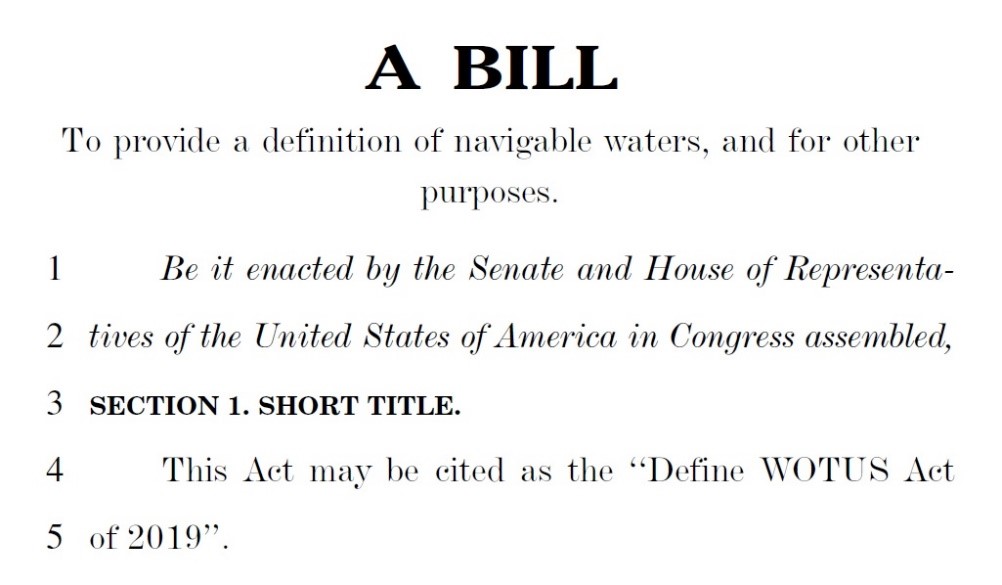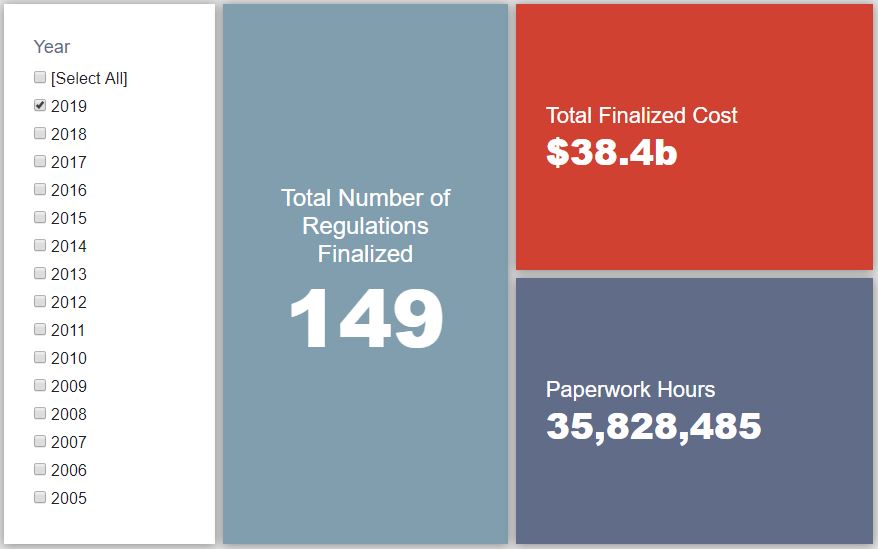Week in Regulation
August 12, 2019
Propane Deregulation Proposal and Not Much Else
There was not much exciting in last week’s issues of the Federal Register – except if you’re Hank Hill. The one notable action was a proposed rule from the Department of Transportation (DOT) that would provide “regulatory relief and a reduction in the requalification-related costs for propane marketers, distributors, and others in non-corrosive gas service.” A handful of annual Medicare and Medicaid rulemakings filled out the rest of the week. Across all proposed and final rules, agencies published $147.9 million in total net cost savings but added 301,178 hours of paperwork.
REGULATORY TOPLINES
- New Proposed Rules: 39
- New Final Rules: 67
- 2019 Total Pages: 39,649
- 2019 Final Rule Costs: $38.4 Billion
- 2019 Proposed Rule Costs: -$2 Billion
TRACKING THE REGULATORY BUDGET
The DOT’s proposed rule was the most notable rulemaking overall this past week. The proposal is a “Response to an Industry Petition to Reduce Regulatory Burden for Cylinder Requalification Requirements.” The measure would update the “requalification” process for certain gas cylinders. DOT estimates that such changes could provide affected entities roughly $209 million in net present value savings. Since this is still only a proposed rule, however, these savings do not affect the fiscal year (FY) 2019 regulatory budget under Executive Order (EO) 13,771. They will most likely be a part of the FY 2020 budget.
So far in FY 2019 (which began on October 1, 2018), there have been 56 deregulatory actions (per the rubric created by EO 13,771 and the administration’s subsequent guidance document) against 32 rules that increase costs and fall under the EO’s reach. Combined, these actions yield quantified net costs of roughly $11.4 billion. This total, however, includes the caveat regarding the baseline in the Department of Agriculture’s “National Bioengineered Food Disclosure Standard.” If one considers that rule to be deregulatory, the administration-wide net total is approximately $4.7 billion in net costs. The administration’s cumulative savings goal for FY 2019 is approximately $18 billion.
THIS WEEK’S REGULATORY PICTURE
This week, a Senate proposal to define Waters of the United States (WOTUS).

Prior to leaving Washington, D.C. for August recess, Sens. Mike Braun (R-IN) and Joni Ernst (R-IA) introduced the straightforwardly named Define WOTUS Act. The bill would essentially codify the WOTUS definition proposed by the Environmental Protection Agency and the Army Corps of Engineers (the agencies) in February. A final rule regarding WOTUS is currently under review at the Office of Information and Regulatory Affairs.
When Congress enacted the Clean Water Act, it directed the agencies to define the term WOTUS, with the mission of protecting the navigable waters of the United States. The term is important because it determines where the federal government can prohibit or require permits for certain discharges or activities, such as land development. The definition, however, has been the subject of litigation for decades due to the challenge of clearly delineating which waters affect the downstream quality of navigable waters, as well as how far Congress intended the federal government’s reach to extend.
As has become typical in today’s political environment, Democrats have accused the Trump EPA of “gutting” the CWA — just as Republicans were outraged at the “land grab” of the Obama Administration’s 2015 rule (which the Trump rule will replace). In addition to the partisan discord that has been a mainstay of the WOTUS regulatory process, courts are unclear on exactly what Congress wanted when it enacted the CWA, exemplified by a series of U.S. Supreme Court decisions since the mid-1980s that have all changed how the rule is enforced.
It is clear a legislative definition is needed. Since the Define WOTUS Act codifies the Trump vision of WOTUS, it is unlikely to get the 60 votes necessary to pass the Senate or get even get a vote in the House of Representatives under current leadership. The hope here is that it can serve as a starting point for Republicans and Democrats to agree on a legislative definition that provides the clarity that is desperately needed by landowners and the regulated community.
TOTAL BURDENS
Since January 1, the federal government has published $36.4 billion in net costs (with $38.4 billion in finalized costs) and 42.9 million hours of net paperwork burden increases (with 35.8 million coming from final rules). Click here for the latest Reg Rodeo findings.












